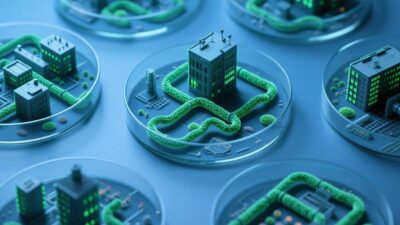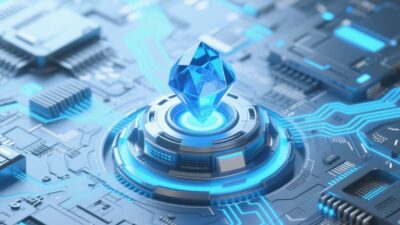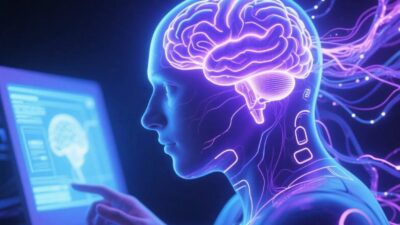Merging Biology and Technology to Save Lives
The Need for Innovative Disaster Response Tools
Natural disasters—earthquakes, floods, wildfires, and pandemics—exact a devastating toll on human life, infrastructure, and ecosystems. Traditional disaster response tools, while effective, often face limitations: rigid design, high energy consumption, and inability to adapt to dynamic, hazardous environments. Enter biohybrid robots—a revolutionary fusion of biological systems (e.g., living cells, plant-based materials, or microbial communities) and robotic engineering. These robots leverage biology’s adaptability, sustainability, and sensory precision to address disaster response challenges, offering a paradigm shift in emergency relief. This report explores the design, applications, and ethical considerations of biohybrid robots in disaster scenarios, highlighting their potential to redefine crisis management.
What Are Biohybrid Robots?
Biohybrid robots integrate biological components—such as cells, tissues, or bioengineered materials—with mechanical or electronic systems to create adaptive, self-sustaining machines. Unlike purely mechanical robots, they draw on biological processes (e.g., photosynthesis, chemotaxis, or self-healing) to enhance functionality. Key components include:
- Biological Sensors: Microbes or cells engineered to detect toxins, pathogens, or environmental changes (e.g., pH, temperature).
- Actuators: Muscle-like biofilms or plant-based materials that enable movement or manipulation.
- Energy Systems: Photosynthetic organisms (e.g., algae) or microbial fuel cells to generate power.
- Self-Healing Materials: Bioengineered polymers or tissues that repair damage autonomously.
This synergy allows biohybrid robots to operate in environments where traditional robots falter—such as toxic waste zones, collapsed buildings, or wildfire-affected areas.
Applications in Disaster Response
Biohybrid robots are uniquely suited to address critical disaster response needs:
1. Search and Rescue
- Navigating Rubble: Biohybrid robots with flexible, bio-inspired limbs (e.g., using insect exoskeleton materials) can crawl through debris, avoiding sharp edges or unstable structures.
- Detecting Survivors: Microbial sensors embedded in robots can identify human breath (CO₂, heat) or chemical signals (e.g., lactic acid from sweat), pinpointing trapped individuals.
2. Hazard Mitigation
- Toxin Detection: Engineered bacteria or algae in robots can monitor air/water for toxic chemicals (e.g., heavy metals, radioactive isotopes) post-disaster, mapping safe zones.
- Wildfire Suppression: Plant-based robots with fire-resistant coatings or moisture-retaining tissues can deliver water or fire retardants to hard-to-reach areas.
3. Infrastructure Repair
- Self-Healing Materials: Biohybrid robots with microbial concrete (bacteria that produce limestone) can repair cracks in bridges or buildings, restoring critical infrastructure.
- Debris Removal: Soft robotic grippers, inspired by octopus tentacles, can gently lift debris without damaging surviving structures.
4. Environmental Restoration
- Pollution Cleanup: Biohybrid robots with algae or fungi can absorb oil spills or degrade plastic waste, accelerating ecosystem recovery.
- Reforestation: Seed-dispersal robots, using biodegradable materials, can plant native species in burned or flooded areas, aiding ecological restoration.
Advantages Over Traditional Robots
Biohybrid robots offer distinct benefits:
- Adaptability: Biological components enable real-time adaptation to changing conditions (e.g., adjusting movement based on terrain or toxin levels).
- Sustainability: Bioengineered materials (e.g., mycelium-based composites) are biodegradable, reducing environmental impact.
- Energy Efficiency: Photosynthetic or microbial energy systems minimize reliance on external power, critical in disaster zones with limited infrastructure.
- Cost-Effectiveness: Self-healing and self-sustaining capabilities reduce long-term maintenance costs.
Challenges and Limitations
Despite their potential, biohybrid robots face significant hurdles:
1. Technical Complexity
- Integration of Biology and Machinery: Ensuring biological components (e.g., cells) function reliably in robotic systems—balancing moisture, temperature, and mechanical stress.
- Scalability: Manufacturing large quantities of biohybrid robots with consistent performance remains challenging.
2. Ethical and Ecological Risks
- Biosecurity: Releasing engineered microbes or organisms into disaster zones could disrupt local ecosystems or spread unintended pathogens.
- Animal Welfare: Using animal-derived tissues (e.g., insect exoskeletons) raises concerns about exploitation and animal rights.
3. Regulatory Gaps
- Lack of Standards: No global framework governs the development or deployment of biohybrid robots, creating ambiguity in liability and safety.
- Ownership and Control: Questions arise over who “owns” biohybrid robots—developers, users, or the organisms they contain.
Case Studies: Pioneering Biohybrid Disaster Response
- Project BioBot (MIT): Developed a biohybrid robot using E. coli bacteria to detect heavy metals in floodwaters. The robot mapped contamination zones in Louisiana after Hurricane Katrina, guiding cleanup efforts.
- RoboTree (Switzerland): A plant-based robot with photosynthetic leaves and flexible stems, tested in wildfire-prone areas to deliver water and monitor fire spread.
- Mycelium Robotics (Netherlands): Mycelium (fungal biomass)-based robots that self-heal and degrade plastic waste, deployed in the Netherlands’ “Plastic Soup” cleanup initiative.
Ethical Considerations: Balancing Innovation and Responsibility
The rise of biohybrid robots demands careful ethical reflection:
- Precautionary Principle: Ensure biohybrid robots do not harm ecosystems or human health before widespread deployment.
- Inclusivity: Involve local communities in disaster response planning to avoid “techno-colonialism” and ensure solutions address their needs.
- Transparency: Disclose the biological components and risks of biohybrid robots to build public trust.
The Future of Biohybrid Robots in Disaster Response
The future hinges on innovation and collaboration:
- AI Integration: Pairing biohybrid robots with AI to enhance decision-making (e.g., predicting disaster impacts, optimizing rescue routes).
- Synthetic Biology: Engineering microbes to perform specialized tasks (e.g., neutralizing nerve agents, producing emergency medical supplies).
- Global Partnerships: Initiatives like the UN’s Disaster Risk Reduction framework could standardize biohybrid robot deployment, ensuring equitable access.
A New Era of Disaster Resilience
Biohybrid robots are not just tools—they are a bridge between biology and technology, offering unprecedented capabilities to protect lives, restore ecosystems, and build resilient communities. By addressing technical, ethical, and regulatory challenges, we can unlock their full potential, ensuring that disaster response is not just reactive, but proactive, sustainable, and humane.
As we navigate an era of increasing climate instability, biohybrid robots remind us that innovation, when guided by ethics and empathy, can turn crises into opportunities for growth.



